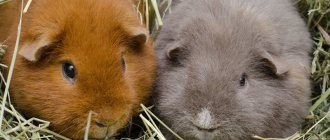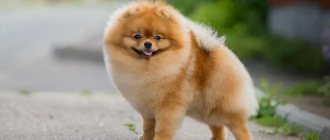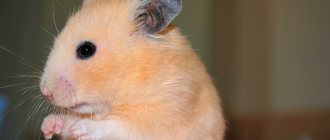Which monkey is the ancestor of humans?
The possible founder of the hominid family may be Ouranopithecus, whose bones were discovered in northern Greece, living about 10 million years ago. This species may well be the ancestor of modern apes and humans.
Interesting materials:
What coins are currently used in Russia? What coins are in Russia now? What peoples belonging to the Indo-European language family live in Russia? Which peoples of Russia were serfs? What nationalities live in northern Russia? Which World Natural Heritage sites are located in Russia? What are the largest regions in Russia? What oceans and how do they influence the climate of Russia? What protected plants are there in Russia? What lakes are in Russia?
How do they reproduce?
The timing of puberty can vary greatly among different breeds of monkeys. For example, in marmosets and tamarins, readiness to reproduce occurs at the age of 1 year, in brown capuchins - at 4 years, in gibbons - at 8 years, in orangutans - at 12. Males at the top of the hierarchy of the flock have a preferential right to mating. During the breeding season, most species exhibit a more aggressive behavior: males much more often engage in fights for position in the group, and also drive away rivals from other packs.
Childbirth occurs after 140-210 days of pregnancy. Most often, the female gives birth to one cub, much less often - two. In the first months, the baby eats only milk and spends all the time with his mother, tenaciously grasping the fur on his back. The cub remains with its mother until the age of five, and the entire flock takes part in its upbringing.
Features of character and lifestyle
Photo: Chimpanzee primate
They spend most of their time in trees. They come down infrequently, and do not feel very comfortable on the ground, since it is below that they are most threatened by predators. The main reason they have to go down is the need to go to water. They move on the ground on four legs; upright walking is common among chimpanzees only in captivity.
They make nests right on large branches, also made from branches and foliage. They sleep only in nests. They know how to swim, but they don’t like it too much, and in general they prefer not to get their fur wet again.
They are mainly concerned with food and searching for it - this takes most of the day. Everything is done leisurely, and the calm in the group is disturbed only by the appearance of enemies - these could be predators, humans, hostile chimpanzees. Seeing a threat, the monkeys begin to scream loudly to notify everyone of the danger and confuse the attacker.
They themselves can demonstrate very different behavior: from admiring flowers - these are rare animals in which this has been recorded, and helping cat cubs left without mothers, to killing and eating relatives, hunting smaller monkeys for fun.
Chimpanzees are smart and able to learn quickly, and if they constantly see people, they adopt their manners and techniques. As a result, these monkeys can even be trained to perform quite complex actions: for example, the 18th century French scientist Georges-Louis Buffon taught a chimpanzee the manners and duties of a servant, and he served him and his guests at the table. Another trained monkey sailed on a ship and knew how to perform the basic duties of a sailor - handling the sails and lighting the stove.
Interesting fact: Chimpanzees can be taught sign language - they are able to master several hundred gestures and communicate meaningfully using them.
What does a chimpanzee eat?
Photo: Common chimpanzees
They eat both plant and animal foods. Most often their menu includes:
- stems and leaves;
- fruit;
- bird eggs;
- insects;
- honey;
- fish;
- shellfish
Chimpanzees can also eat roots, but they don’t like them, with the exception of a few, and use them only if there is no choice. Some scientists believe that animal food is a constant part of the chimpanzee's diet, and on a rare day they have to make do only with plant food. Others claim that they do not resort to animal food all the time, but only in the fall, when the amount of available plant food decreases.
Usually they engage in gathering, walking around the area in search of food, remembering the most productive groves, and planning a daily route so as to avoid them first. But sometimes they can organize a hunt, usually for monkeys or colobus monkeys - it is conducted by a group and planned in advance.
During the hunt, the prey is surrounded, and then large males complete the process by climbing up the tree and killing it. In addition to small monkeys, a wild pig, usually a young one, can become a victim - hunting adult wild boars is too dangerous. Bonobos do not engage in organized hunting, but can also sometimes catch small monkeys.
They can also obtain food in other ways, including using various tricks and improvised means: for example, they take a straw and lower it into an anthill, and then lick off the ants that have crawled on it, or split shells with stones to get to the soft parts of mollusks.
Interesting fact: Chimpanzees have come up with many uses for leaves - they cover their nests with them, make umbrellas out of them to protect from rain, fan themselves like fans in the heat, and even use them as toilet paper.
Monkey in the house: nuances
How long monkeys live at home depends on proper care for them, and for this you need to know where to keep them, how to care for them, how to walk, feed and treat them.
Where to keep it?
Monkeys must be kept in a cage. You must choose a cage that is spacious but durable so that the animal cannot get out on its own. Place a tray at the bottom and pour sawdust or sand into it.
To prevent your pet from getting bored, you can attach a mirror to the cage. Inside the cage you can place a house with a blanket and a branch for acrobatic exercises.
Natural enemies of chimpanzees
Photo: Chimpanzee
Some of Africa's predators hunt chimpanzees. But for most, they are not one of the main objects of hunting, since they live in trees and can rarely be caught on the ground, in a vulnerable position. If young individuals can be caught by various predators, then for adults the threat is mainly leopards. These cats, strong and fast, are well camouflaged and remain invisible. And most importantly, they are able to climb trees, and are so agile that they can kill chimpanzees right on them.
When attacked by a leopard, the monkeys can only escape through the actions of the entire group: they begin to scream loudly, calling on their relatives for help. If they are nearby, they also raise a loud cry, trying to scare the leopard, throwing branches at it. Although the chimpanzees can no longer oppose him, the instincts of a predator in such conditions force him to retreat from the prey.
Chimpanzees often clash with each other - intraspecific hostility is one of the most common causes of their deaths. One such episode was described in detail by Jane Goodall: the “war” between the two parts of the once divided group raged from 1974 for four years.
During its course, both sides used cunning, waylaying their enemies one by one, after which they killed and ate them. The conflict ended with the complete extermination of the smaller group. After this, the victors tried to occupy enemy territory, but encountered another group and were forced to retreat.
Population and species status
Photo: Chimpanzee primates
Both common chimpanzees and bonobos are listed in the Red Book and have the status of EN - endangered species. Of course, they successfully breed in captivity, but the task of keeping them in the wild seems more difficult - the number of wild chimpanzees is falling from year to year.
In some areas the drop is critical - for example, in Côte d'Ivoire, in just a few decades there have been 10 times fewer of them. This is facilitated by both human activity and epidemics breaking out among monkeys. For example, the well-known Ebola fever reduced their numbers by about 30%.
As a result, there are fewer and fewer chimpanzees in the wild. Current population estimates range from 160,000 to 320,000 individuals. They do not live compactly, but are scattered across most of Africa in small pockets, and a significant part of them is threatened with complete destruction.
Bonobos are even smaller: their total number, according to various sources, ranges from 30,000 to 50,000 with a pronounced downward trend - it decreases by 2-3% per year. The chimpanzee population has fallen dramatically over the last hundred years - at the beginning of the twentieth century only a very rough estimate can be made, but in any case there were more than a million chimpanzees living in the wild. Perhaps even 1.5-2 million.
An interesting fact: Chimpanzees actively use improvised means to simplify life, and even make tools themselves. Their activities are varied - from digging holes to accumulate water to sharpening branches, as a result of which peculiar spears are obtained from them. They pass on such discoveries to their offspring, and the tribe gradually accumulates knowledge and develops. Scientists believe that a more detailed study of this behavior will make it possible to clarify the course of human evolution.
Japanese macaque: description
The Japanese macaque (Macaca fuscata) is a chordate mammal from the order of primates. In addition, this monkey belongs to the marmoset family, which includes more than two dozen species of monkeys. At the beginning of the 19th century, scientists discovered two subspecies of these mammals, which then received their name:
- Macaca fuscata fuscata, 1875.
- Macaca fuscata yakui Kuroda, 1941.
Similar monkeys live almost throughout Japan.
The most numerous populations live within national parks, such as:
- Shikotsu-Toya National Park. Located within Hell's Valley on the island of Hokkaido.
- Jigokudani National Park is located in the north of Honshu.
- Quasi-national park Meiji No Mori Mino, which is not far from Osaka.
Based on the found remains of macaques, it was established that they belong to the Pliocene era, which is about 5 million years ago, and maybe more. The presence of remains indicates that macaques survived mammoths, while meeting the first Neanderthals. According to experts, macaques appeared on Japanese territory as a result of crossing the isthmus that connected the islands of Japan and the Territory of Korea. This happened about 500 thousand years ago.
Snow Monkey (Japanese Macaque) - Interesting Facts
Appearance and features
Japanese macaques are characterized by having long hair, and their skin color is red, unlike other members of the family. The Japanese call these animals red-faced. The coat is spread over almost the entire body, with the exception of the face, paws and buttocks. Thanks to their thick fur, macaques have adapted to harsh living conditions. The base color can vary from brown to gray and even tan.
This species has a small, squat body, a small tail, as well as small ears and a characteristic elongated skull. The eyes are warm brown with noticeable yellowness. In general, these macaques have an intelligent and expressive look.
Adult individuals gain weight of about 12 kilograms, while males are not only larger than females, but also more massive. Males weigh on average 11 and a half kilograms with a body length of no more than 0.6 meters, and females weigh a little more than 8 kilograms, with a height of a little more than half a meter.
Scientists have been able to establish that the mass of these macaques depends on the nature of the climatic conditions in which these animals live. Living in warmer natural environments, macaques weigh less than populations living in northern regions.
Populations living in more comfortable conditions have larger cranium sizes compared to populations living in more severe conditions. In males living in warm areas, the skull size is about 13.4 cm, and in males living in cold regions, the skull length is within 12.9 cm, while the length of the skull of females is about one and a half centimeters less in both cases .
Where does the Japanese macaque live?
From the name of the animal it can be understood that these mammals live within the Japanese islands. They can be found almost throughout the archipelago and throughout the island. They live both in warm climates within subtropical and subalpine forests, and in cool temperate climates represented by temperate deciduous and deciduous forests. In such natural conditions, the average annual ambient temperature is plus 10.9 degrees, while the amount of precipitation is at the level of one and a half thousand millimeters.
The habitat of macaques in the southern territories is associated with evergreen broad-leaved forests. In such conditions, the average annual temperature is about plus 20 degrees, and the amount of precipitation reaches 3 thousand millimeters. Despite this, the entire habitat is associated with harsh winter conditions. To overwinter, groups of animals descend to 2 thousand meters above sea level. Almost all animals spend the winter in the lowlands, where conditions are more comfortable.
In summer, macaques are found at altitudes of more than 3 thousand meters above sea level, while they live not only in the central part of the island, but also on the outskirts, choosing the coasts, as well as coastal areas of lakes and marshy areas.
In the 70s of the last century, two and a half dozen pairs of Japanese macaques were transported to a ranch in Texas for experiments. As a result, primates found themselves in completely different living conditions. Finding themselves in conditions where the environmental temperature, as well as food preferences, were not typical for the species, macaques found themselves on the verge of extinction. Many animals simply died, unable to withstand such conditions. Despite this, some pairs managed to adapt to such living conditions and began to reproduce.
About two decades passed, and the population in Texas recovered and then increased. These animals managed to escape into the freedom of the arid state, where they were faced with not at all comfortable living conditions. The primates suffered from both lack of food and lack of moisture. They were attacked by both predators and people. Thanks to the timely response of animal protection organizations, the remaining animals were caught and returned to the protected area.
What does the Japanese macaque eat?
These animals are omnivores and can eat a wide variety of foods. Macaques consume up to two hundred species of different vegetation as plant food. In addition, depending on the season, the diet may vary significantly. The diet is especially rich in the autumn, when in the forests of Japan there is simply an abundance of plant food, in the form of mature leaves of plants, their fruits, nuts, various root vegetables, ripened and overripe fruits.
With the onset of spring, macaques rummage through fallen leaves to find young shoots of bamboo or fern. In addition, they manage to find young buds and shoots of various other vegetation. Due to the fact that some of the food items still remain from last year, the animals get it by digging it out from under the snow, from under the grass, from under fallen leaves and from under moss. As spring approaches, animals begin to feel the lack of food more and more acutely. As a result, the monkeys begin to feed on all kinds of insects, which, sensing the warmth, began to appear on the surface of the earth.
With the onset of spring, the diet of Japanese macaques begins to contain eggs of various species of birds, in which the breeding season begins. This species of monkey happily eats mushrooms, of which there are sufficient quantities in the forests of Japan. Mushrooms grow not only on the ground, but also on trees, which is no problem for the poppy to find them at any time of the year.
Almost all year round, monkeys eat nuts and berries. They may remain abundant since the fall, although they may be somewhat frostbitten, but this does not stop the macaques, since they need to eat something. Monkeys often chew tree bark and soil. They hunt invertebrates, and macaques, which live not far from bodies of water, also feed on what lives in the water.
Character and lifestyle
Japanese macaques are characterized by a very friendly behavior, as well as the presence of their own way of life. They are quite smart and calm animals. Thanks to the presence of a certain level of intelligence, macaques manage to survive long winters, lasting up to 4 months. This fact turned out to be accessible to primates due to a certain level of organization and rules that reign within each group of animals.
Despite the fact that these primates have long and thick fur, it is not water-repellent, so when they are outside of a warm bath, they often get cold and can get sick. To spend a long time in warm water, some tribesmen stand guard to prevent unexpected guests from appearing, while they bring food to their relatives. After their time to warm up comes, they are lowered into the water.
Japanese macaques are quite amazing creatures because they maintain a certain level of hygiene. They wash the food and clean it of any remaining soil. Experts note the fact that before eating cereals, they soak them in water.
Interesting moment! Japanese macaques enjoy having fun, and the nature of the entertainment depends on the season. In winter, they, like people, enjoy skiing down the mountains and also playing snowballs. The presence of this level of intelligence of Japanese macaques is noted in religion, folklore, and also in the art of Japan.
Japanese macaques are mainly active during the daytime, being mostly in trees. When communicating with each other, they use their own means of communication, and experts even note the presence of a certain type of dialect. In addition, they actively use their facial expressions and gestures. When expressing their thoughts and emotions, macaques often use their teeth, eye expression, ear position, eyebrow raising, etc.
How long does a Japanese macaque live?
In the wild, Japanese macaques live up to 25-30 years, in captivity - longer. In terms of life expectancy, females are slightly ahead of males: the former live (on average) 32 years, while the latter live about 28 years.
Reproduction and offspring
These primates prefer to live in groups in which there is a strict hierarchy. Alpha males always enjoy privileges, including in terms of access to food.
Macaques teach their offspring the skills and abilities that they possess. They protect their offspring, share food items among themselves, communicate with each other using signals, warning all members of the group of danger. They look after each other, ridding each other of parasites, as well as creating various social bonds within each group, and maintaining these bonds over a long period of time. A large share of communications occurs between married couples, as well as between mothers and daughters.
Macaques form family pairs, mate, and also feed, rest and travel during the breeding season. To choose a female for themselves, alpha males enjoy privileges. In addition, alpha males are capable of destroying other married couples if they are located one step lower in the hierarchy. Although females can mate with any male, they prefer dominant males. In any case, the female makes the decision to mate with one or the other male.
After mating, the female carries her future offspring for six months. As a rule, one cub is born, although there are cases when a pair of cubs are born. Females are ready to breed after reaching the age of four, and males at the age of six. After birth, the cubs, already at the age of one and a half months, begin to get used to adult food. Closer to two months, they can feed independently of their mothers.
During the first month of life, the cubs are held on their mothers' stomachs, after which they move onto their mother's back. Older males also take part in raising the younger generation. In addition to raising them, they feed them and also carry them on their backs, just like their parents.
Natural enemies
Due to the fact that the habitat of the Japanese macaque is relatively narrow, these primates do not have many natural enemies. In this case, the presence of natural enemies is associated with the living conditions of various groups of primates.
These monkeys are in danger almost everywhere:
- From raccoon dogs, which are common throughout Japan.
- From wild cats that are found on the island of Tsushima and on the island of Iriomote, although there are no more than two and a half hundred of them left in the wild.
- From poisonous snakes, which are found in almost all forest plantations, as well as in swampy areas.
- From foxes living on the island of Honshu.
- From mountain eagles, whose habitat is associated with mountainous terrain.
In fact, the most serious danger is posed by human activity, which develops ever new territories by cutting down forests. Monkeys also suffer from hunters. As a result, the habitat of these animals is constantly shrinking.
We can safely say that the number of Japanese macaques depends directly on the destruction of their habitat. As a result, macaques have to adapt to new living conditions. Despite the fact that these primates are protected in Japan, every year people kill up to five thousand individuals. The fact is that in search of food, they regularly raid farms, destroying crops.
Since macaques in Japan received the unofficial status of agricultural pests, they were hunted, and not controlled. As a result, in 1998, about 10 thousand individuals died at the hands of humans. As a result, the thoughtless extermination of these animals forced the government to take a completely different approach to solving this problem.
Is it possible or not?
Do not think that the hobby of keeping monkeys at home was born in modern rich families. Evidence has reached our times that since ancient times in Peru they loved keeping little monkeys at home.
Until today, monkeys are the most common pet in this country. It is also known that pet monkeys were kept in captivity in Ancient Rome, China and Egypt.
One can debate for a long time whether keeping wild animals at home is humane, and a positive answer to this question depends on following the rules for caring for monkeys.
Still, it is better to refuse them if there are small children or pregnant women in the house.
Appearance and features
Photo: Chimpanzee animal
The chimpanzee's body is covered with dark brown fur. It is only missing on the fingers, face and tailbone. The latter is curious, since small chimpanzees have white hairs on their tailbones, and their loss indicates that the individual is maturing.
It is by the presence or absence of hairs that the monkeys themselves determine whether the person in front of them is a child or an adult. Individuals who have not yet grown up with them are forgiven for various pranks, much less is required of them - for example, they do not participate in fights between groups. In mature chimpanzees, the skin color also changes - from pink to black.
Sexual dimorphism is expressed by differences in size and weight. Males grow up to 150-160 cm, females up to 120-130, while weight ranges from 55-75 and 35-55 kg, respectively. At first glance, it is striking that chimpanzees have powerful jaws - they protrude forward and powerful fangs stand out. But their nose is small and flat. Facial expressions are well developed, and chimpanzees actively use them when communicating, as well as gestures and sounds. They can smile.
The head is quite large, but it is interesting that the skull is half empty - for example, a person has practically no free space in it. The chimpanzee brain is significantly smaller in volume than the human brain, making up no more than 25-30% of it.
The forelimbs and hind limbs are approximately equal in length. The thumb is opposable on all of them, which means that chimpanzees are capable of manipulating small objects. Like humans, chimpanzees have individual skin patterns on their palms, meaning it is possible to distinguish them by it.
When walking, they step not on their palms, but on their fingertips. While smaller than humans, chimpanzees have well-developed muscles, due to which they are superior in strength. Pygmy chimpanzees, also known as bonobos, are almost as large as ordinary chimpanzees, and only give the visual impression that they are much smaller. Stand out with red lips.
Interesting fact: Chimpanzees can make a lot of different sounds, but even the basics of human speech cannot be taught to them, since people speak while inhaling, and they exhale.











